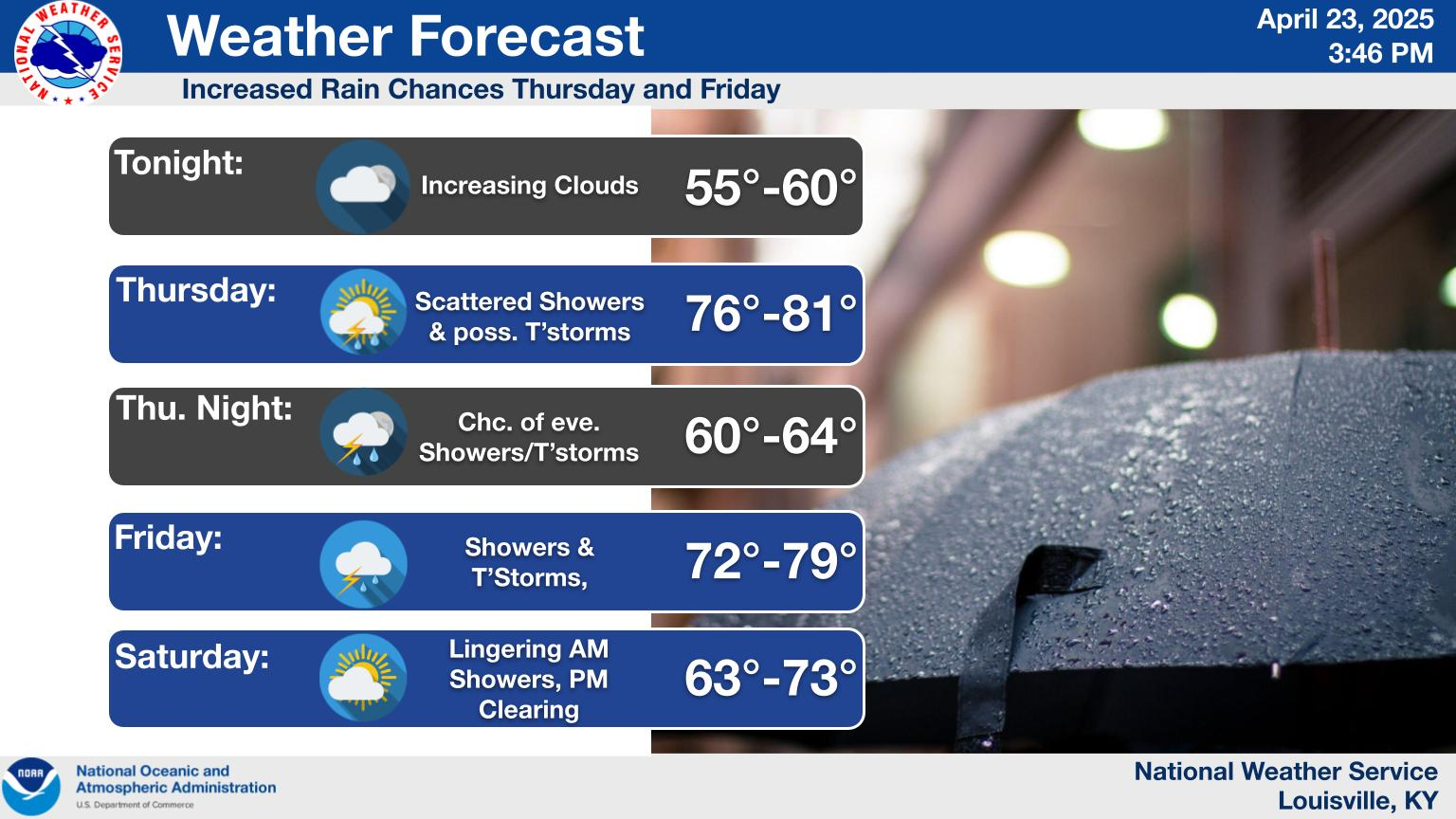Louisville, KY
Weather Forecast Office
 |
 |
Severe storms are expected to affect much of the area overnight with tornadoes, large hail, damaging winds, and cloud-to-ground lightning possible. Ensure wireless emergency alerts are enabled on your cell phone. If you have a NOAA Weather Radio, set it to alert mode so you can be awakened if a warning is issued.
Severe weather that occurs overnight can increase personal vulnerability and have significant potential impact on the public. This is due to:
- Public is less likely to receive warnings overnight as many people are asleep.
- Tornadoes are much more difficult to spot at night.
- People who are inside vulnerable housing/building structures such as mobile homes.
- Nighttime tornadoes are more likely to cause fatalities than daytime tornadoes.
- People often are less aware of severe storm potential in the winter season.
Stay tuned to the National Weather Service for the latest information. Have a plan of action in place and ready to go if severe weather threatens or a warning is issued. More tornado safety information can be found at this link.
Current Hazards
Hazardous Weather Outlook
Storm Prediction Center
Submit a Storm Report
Advisory/Warning Criteria
Radar
Fort Knox
Evansville
Fort Campbell
Nashville
Jackson
Wilmington
Latest Forecasts
El Nino and La Nina
Climate Prediction
Central U.S. Weather Stories
1-Stop Winter Forecast
Aviation
Spot Request
Air Quality
Fire Weather
Recreation Forecasts
1-Stop Drought
Event Ready
1-Stop Severe Forecast
Past Weather
Climate Graphs
1-Stop Climate
CoCoRaHS
Local Climate Pages
Tornado History
Past Derby/Oaks/Thunder Weather
Football Weather
Local Information
About the NWS
Forecast Discussion
Items of Interest
Spotter Training
Regional Weather Map
Decision Support Page
Text Products
Science and Technology
Outreach
LMK Warning Area
About Our Office
Station History
Hazardous Weather Outlook
Local Climate Page
Tornado Machine Plans
Weather Enterprise Resources
US Dept of Commerce
National Oceanic and Atmospheric Administration
National Weather Service
Louisville, KY
6201 Theiler Lane
Louisville, KY 40229-1476
502-969-8842
Comments? Questions? Please Contact Us.


 Weather Story
Weather Story Weather Map
Weather Map Local Radar
Local Radar